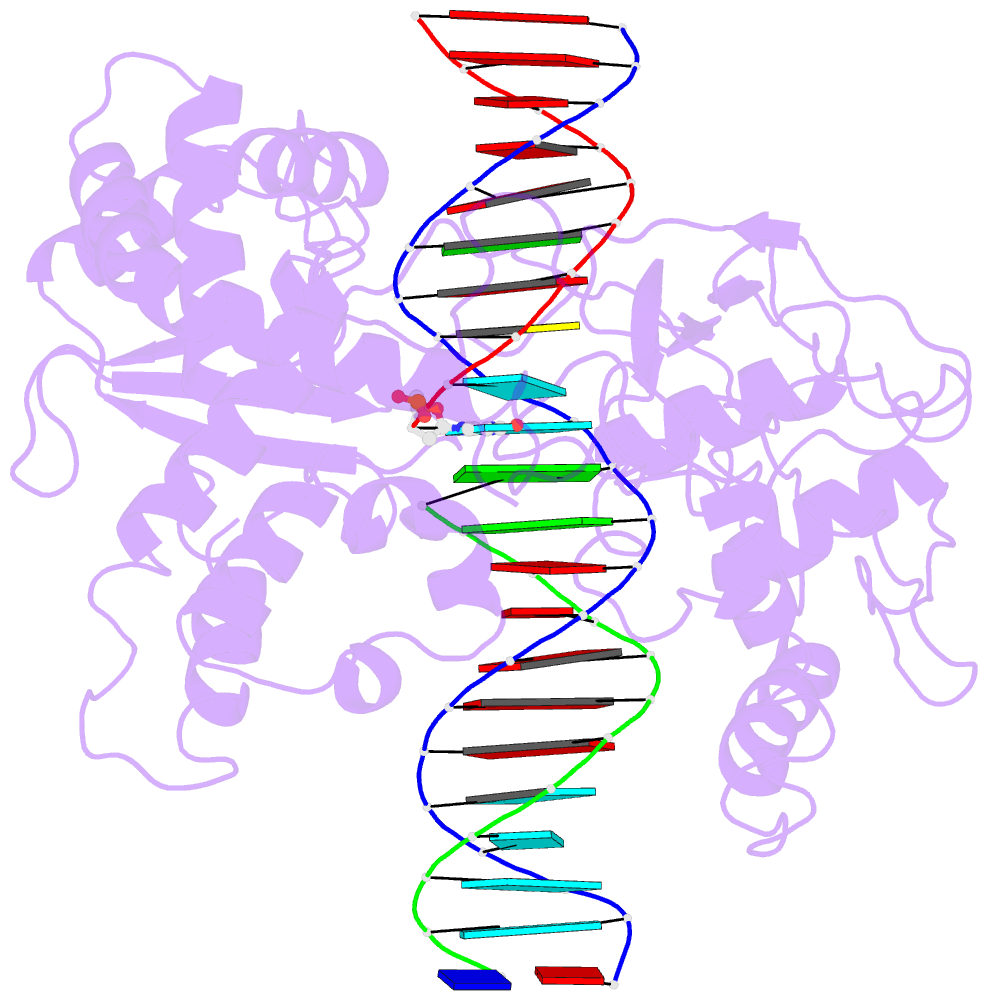Summary information and primary citation
- PDB-id
- 1nh3; SNAP-derived features in text and JSON formats;
DNAproDB
- Class
- isomerase-DNA
- Method
- X-ray (3.1 Å)
- Summary
- Human topoisomerase i ara-c complex
- Reference
- Chrencik JE, Burgin AB, Pommier Y, Stewart L, Redinbo MR (2003): "Structural Impact of the Leukemia Drug 1-beta-D-Arabinofuranosylcytosine (Ara-C) on the Covalent Human Topoisomerase I-DNA Complex." J.Biol.Chem., 278, 12461-12466. doi: 10.1074/jbc.M212930200.
- Abstract
- 1-beta-d-Arabinofuranosylcytosine (Ara-C) is a potent antineoplastic drug used in the treatment of acute leukemia. Previous biochemical studies indicated the incorporation of Ara-C into DNA reduced the catalytic activity of human topoisomerase I by decreasing the rate of single DNA strand religation by the enzyme by 2-3-fold. We present the 3.1 A crystal structure of human topoisomerase I in covalent complex with an oligonucleotide containing Ara-C at the +1 position of the non-scissile DNA strand. The structure reveals that a hydrogen bond formed between the 2'-hydroxyl of Ara-C and the O4' of the adjacent -1 base 5' to the damage site stabilizes a C3'-endo pucker in the Ara-C arabinose ring. The structural distortions at the site of damage are translated across the DNA double helix to the active site of human topoisomerase I. The free sulfhydryl at the 5'-end of the nicked DNA strand in this trapped covalent complex is shifted out of alignment with the 3'-phosphotyrosine linkage at the catalytic tyrosine 723 residue, producing a geometry not optimal for religation. The subtle structural changes caused by the presence of Ara-C in the DNA duplex may contribute to the cytotoxicity of this leukemia drug by prolonging the lifetime of the covalent human topoisomerase I-DNA complex.





